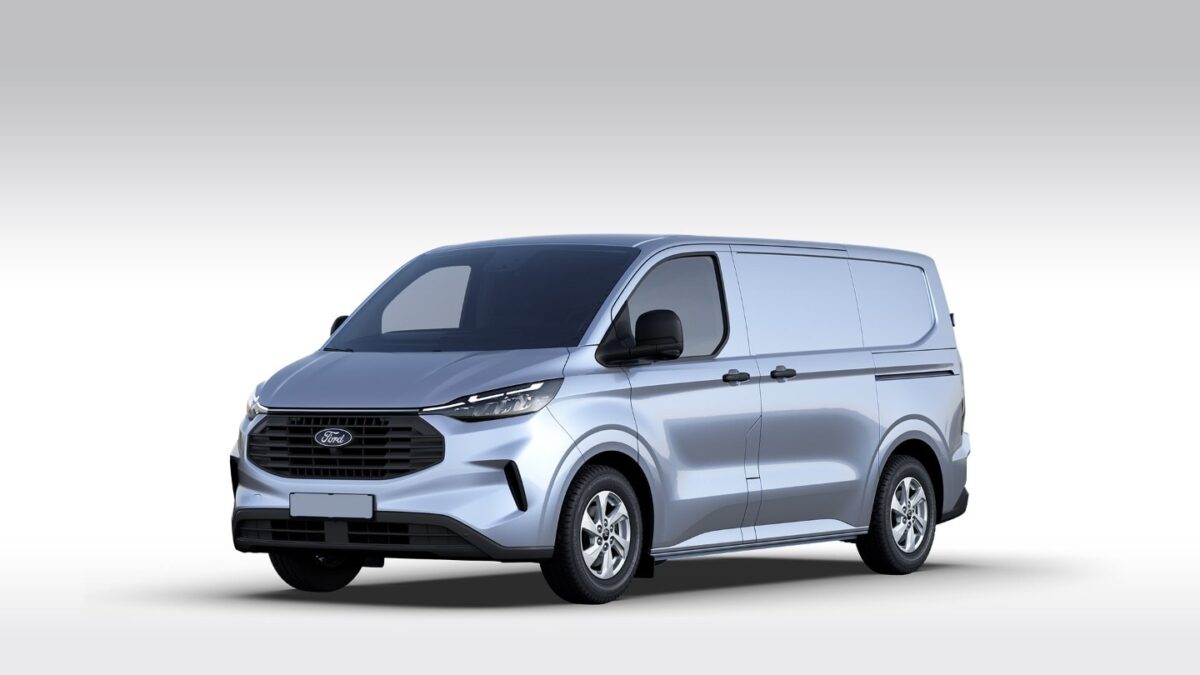When it comes to choosing the right van for your business or personal use, one of the key factors to consider is the Ford Transit Custom length. The Ford Transit Custom offers two distinct variants: the L1 (short wheelbase) and L2 (long wheelbase). Each version is designed to meet different needs, making it important to fully understand the implications of their respective lengths. In this article, we’ll break down the differences between the L1 and L2 models, helping you make an informed decision about which one best fits your needs.
Understanding the Ford Transit Custom Length
The Ford Transit Custom length is one of the primary factors influencing its suitability for various applications. The L1 model is shorter, measuring around 4,972 mm in length, and is ideal for businesses that need a compact vehicle capable of navigating tight urban spaces and congested streets. Its smaller dimensions make it more agile and easier to park, perfect for city deliveries and businesses that work in areas with limited space. On the other hand, the L2 model extends to about 5,339 mm in length. While it may not offer the same level of manoeuvrability as the L1, the L2 provides additional load space, making it more suited to businesses that require the transportation of larger or bulkier items.
The increased Ford Transit Custom length in the L2 version comes with notable advantages, particularly for businesses that rely on transporting larger cargo. With a longer wheelbase, the L2 model offers more storage capacity and an enhanced ride quality, especially when carrying heavy loads. The extra length does not mean that the van becomes unwieldy; however, it does provide that extra edge for those who need the extra space without stepping up to a larger vehicle like the Ford Transit. Whether you’re delivering larger equipment or need to move multiple items in one trip, the L2 version offers an ideal solution.
Comparing L1 and L2 Models in Detail
Exterior Dimensions
One of the key differences between the L1 and L2 models is the Ford Transit Custom length itself. The L1’s shorter wheelbase makes it highly suitable for urban environments, where turning circles and parking spaces are often constrained. The L1 measures approximately 4,972 mm, which gives it excellent handling characteristics. On the flip side, the L2 model stretches to around 5,339 mm, providing that extra length for those who need it. While the L1 offers flexibility, the L2 offers added capability for those who need to transport longer or bulkier goods.
The L2’s Ford Transit Custom length also results in a longer load space. With an increased load length, the L2 model allows businesses to load larger items without needing to make additional trips. The L1, while offering sufficient space for day-to-day needs, may struggle when it comes to larger payloads. The added cargo space in the L2 makes it the go-to option for more demanding businesses. In terms of height and width, both models are similar, meaning the Ford Transit Custom length is the primary differentiating factor when choosing between the two.
Interior Load Capacity
While the Ford Transit Custom length of the L1 might be ideal for urban environments, the L2 offers a better overall load capacity. The L1 provides a maximum load volume of 5.4 cubic metres, which is suitable for most everyday cargo. However, the L2 extends to a load volume of 6.8 cubic metres, making it significantly more versatile for transporting larger or more cumbersome items. Whether you’re running a delivery service or transporting equipment, the extra volume provided by the L2 ensures you can carry more without having to sacrifice the convenience of a van.
In addition to the load volume, the Ford Transit Custom length in the L2 version allows for an increased load length, which means that longer items can fit inside the vehicle without the need for awkward positioning or overhanging. The L1, though more compact, might not accommodate longer loads as easily. Therefore, for businesses in need of versatility, the L2 model is a better fit. It offers not only more load space but also greater flexibility in how you arrange and store your cargo.
Handling and Performance
When it comes to driving dynamics, the Ford Transit Custom length plays a significant role. The L1 model, with its shorter length, is generally more manoeuvrable, making it perfect for navigating tight spaces, busy city streets, and parking in urban areas. Its compact design means that it is quicker to accelerate, making it ideal for businesses that need to cover short distances efficiently. The L2 model, while slightly less agile due to its longer wheelbase, offers improved stability, especially when fully loaded. The longer wheelbase of the L2 provides a smoother ride and enhanced road stability, which is crucial for longer journeys.
However, it’s essential to note that the Ford Transit Custom length and the vehicle’s overall handling are balanced. Both the L1 and L2 models benefit from Ford’s advanced suspension system, ensuring that even the longer L2 version provides a smooth and stable drive. The additional length of the L2 model doesn’t make it cumbersome to drive, and it’s still a highly manoeuvrable option for businesses that need a practical solution for long-distance transportation.
Choosing the Right Ford Transit Custom Length for Your Business

When choosing between the L1 and L2 models, understanding your business’s needs is crucial. The Ford Transit Custom length in both the L1 and L2 models caters to different types of operations. The L1 is perfect for businesses that require flexibility and the ability to easily navigate tight spaces. It is also ideal for those who mostly carry smaller loads or need to make frequent city-based deliveries. However, if your business requires more load space for transporting larger items, then the L2 model is your best option. The extra space allows you to load more, which can be highly beneficial for businesses with higher cargo demands or those involved in long-distance delivery.
Additionally, the Ford Transit Custom length in the L2 model provides more room for potential conversions, such as turning the van into a Ford Transit campervan or a Ford Transit Custom sport variant. With its extra length, the L2 can be customised to fit your specific business or leisure needs. For those in the market for a new Ford Transit Custom, considering the dimensions and how you’ll use the van is key to ensuring you pick the right model. Whether it’s for work or recreation, the Ford Transit Custom offers the versatility to match your requirements.
Conclusion
Choosing the right Ford Transit Custom length—whether it’s the L1 or L2 model—depends on your unique needs. The L1 offers a compact and agile solution for urban use, while the L2 model provides additional cargo space, making it perfect for businesses requiring more storage capacity. Both versions maintain the high quality and performance that the Ford Transit is known for, ensuring a reliable solution for your transport needs.
Before making your decision, consider the size of your usual loads, the area in which you operate, and any specific requirements you may have, such as the potential for vehicle modifications or long-distance driving. With its versatile range of options, the Ford Transit Custom can be the perfect van for a wide range of applications.
Frequently Asked Questions (FAQs)
What is the difference in load volume between the L1 and L2 models?
The L1 offers a load volume of 5.4 cubic metres, while the L2 model provides a larger capacity of 6.8 cubic metres, making it ideal for transporting bulkier loads.
Is the L2 model significantly harder to drive in urban areas?
While the L2 is longer and less manoeuvrable than the L1, it remains highly manageable due to its advanced suspension and Ford’s design focus on ease of driving, even in city environments.
Can the L2 Ford Transit Custom be converted into a campervan?
Yes, the L2 model offers additional space, making it ideal for conversion into a Ford Transit Custom campervan. Its extra length allows for comfortable living space and additional storage.
Does the Ford Transit Custom L2 have a higher fuel consumption than the L1?
The longer wheelbase of the L2 model may result in slightly higher fuel consumption due to the extra weight and space. However, the difference is generally marginal and should not significantly affect day-to-day costs.
What is the typical cost difference between the L1 and L2 models?
The L2 model is typically priced higher than the L1 due to its larger size and increased load capacity. However, the cost difference will depend on the specific model year and features.
You may also read: How Oliver Wyman Spring Week Helps Launch Your Consulting Career


